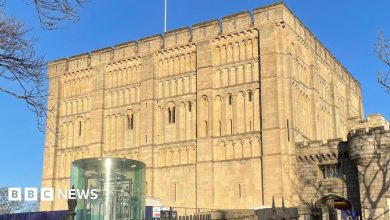Houses to be built on Van-Dal shoe factory site in Norwich

The once-thriving Van-Dal shoemakers factory had been a staple in the community for years, providing employment and a sense of purpose for many locals. However, after the company moved out in 2018, the building was left to fall into disrepair, becoming a hotbed for vandalism and anti-social behavior. The factory’s windows were smashed, and its walls were covered in graffiti, making it a unsightly eyesore in the neighborhood. The community was concerned that if the site was left untouched, it would become a magnet for trouble, driving down property values and causing safety concerns for nearby residents. It was clear that something needed to be done to revitalize the area and breathe new life into the abandoned factory.
Carli Harper, the cabinet member for major projects at the local authority, recognized the need for action and was determined to drive up the provision of affordable housing in the area. She saw the derelict factory as an opportunity to make a positive impact on the community, and her vision was to transform the site into a thriving residential area. “We are determined to drive up provision of affordable housing, and this shows our ambition,” she stated. Harper’s commitment to the project was evident, and she was keen to see the site being put to good use, rather than allowing it to continue to deteriorate. The fact that the site was at risk of becoming a hub for anti-social behavior and a localized eyesore only strengthened her resolve to see the project through to completion.
Tragedy struck when a devastating fire tore through the building, causing significant damage and raising concerns about potential asbestos risks. The local community was shocked and worried, and as a precaution, people were urged to close their windows and avoid touching any debris. The nearby primary school was even forced to shut down temporarily due to safety fears, highlighting the severity of the situation. The incident served as a wake-up call, emphasizing the need for urgent action to be taken to address the site’s condition and prevent any further incidents. In the aftermath of the fire, Norwich City Council stepped in, purchasing the site with part of its Town Deal revolving fund. The council’s decision to buy the site was a crucial step towards revitalizing the area and ensuring that the land would be used for the betterment of the community.
The council’s acquisition of the site was made possible by a government grant, which was specifically allocated to unlock stalled brownfield sites like the old factory. By selling the site to developers, the council aimed to stimulate growth and development in the area, while also ensuring that the new project would meet the community’s needs. In this case, the council agreed to sell the site to Flagship, a developer that had committed to providing around 48 new affordable homes, subject to planning permission. This was a significant victory for the community, as it would not only provide much-needed housing but also help to regenerate the area. The fact that the new development would include affordable housing was particularly important, as it would help to address the pressing issue of housing affordability in the area.
While the sale of the site to Flagship was a major milestone, there was still much work to be done before construction could begin. Hemingford Group, the previous owner of the building, had already carried out demolition work on the site, but the project could not move forward until planning permission was granted. The community waited with bated breath as the developers worked to secure the necessary approvals, knowing that the project’s success was dependent on the outcome. The prospect of new housing and the revitalization of the area was a tantalizing one, and locals were eager to see the site transformed into a thriving residential community. As the project progressed, it was clear that the transformation of the old factory would have a profound impact on the neighborhood, bringing new life and energy to the area.
As the community looked to the future, they were filled with a sense of hope and optimism. The redevelopment of the old factory was more than just a construction project; it was a chance to rebuild and revitalize the neighborhood. The provision of affordable housing would help to address a critical need in the community, while also injecting new life into the area. Carli Harper’s vision of a thriving residential community was slowly but surely becoming a reality, and the community was eager to see the finished product. As the project continued to take shape, it was clear that the transformation of the old factory would be a testament to the power of community-driven development, and a shining example of what could be achieved when local authorities, developers, and residents worked together towards a common goal. The once-derelict factory was finally being given a new lease on life, and the community was excited to see what the future held for this formerly neglected site.








